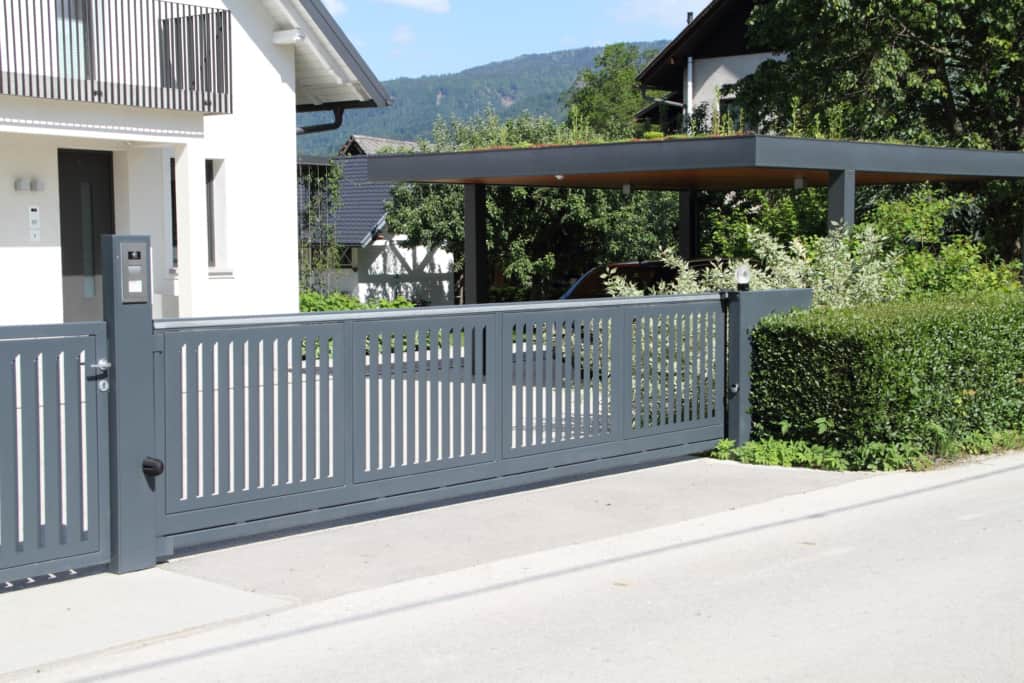[ad_1]
Automatic driveway gates are a great convenience, providing an extra layer of protection for your home and enhancing its aesthetic appeal. But like all machines, these gates can experience errors and malfunctions.
The good news is that most issues are minor and can be resolved quickly with just a little bit of troubleshooting. In this article, we’ll discuss the steps you can take to troubleshoot your automatic driveway gate.
Step 1: Check the Power Supply
Before you try anything else, check if the gate is receiving power. Make sure that the gate’s power supply is on, the circuit breaker is not tripped, and the power outlet is functioning correctly. If the power is off, turn it on and check if the gate is now functioning.
Step 2: Inspect the Gate’s Tracks
It is essential to check if the gate’s tracks are free of dirt, debris, and obstructions. Accumulation of dirt and debris can cause the gate to malfunction, and obstructions can prevent it from opening or closing. Clean the tracks and make sure they are clear of obstructions.
Step 3: Check the Gate’s Remote Control
If the gate is still not working, check the remote control. Make sure that the remote’s battery is working correctly, and it is within the range of the gate. Try replacing the batteries in the remote control to see if that improves the opening or closing of the gate.
Step 4: Inspect the Gate’s Sensors
Automatic driveway gates come with sensors that detect obstacles and prevent the gate from closing when someone is in the way. Check the sensors to ensure that they are clean and not obstructed. If one or both of the sensors are not functioning, it may cause the gate to malfunction.
Step 5: Check the Gate’s Motor
The gate’s motor drives the gate’s movement. If the motor is not working properly or has stopped functioning altogether, the gate will not open or close. Check the motor to ensure it is not damaged and has not seized. Sometimes, a simple motor reset can help restore the gate’s functionality. Unplug the gate motor for 30 seconds and then plug it back in to reset it.
Step 6: Consult with a Technician
If you have gone through the steps above and still cannot resolve the issue, then it may be time to consult with a professional. Contact a licensed technician to inspect the gate and determine what issue it is facing. They can diagnose the problem and provide the necessary repairs.
FAQs About Automatic Driveway Gates
Below are some frequently asked questions about automatic driveway gates:
Q: How often should I maintain my automatic driveway gate?
A: Automatic driveway gates should be maintained regularly to ensure they function correctly. It is suggested to lubricate the gate’s moving parts, tighten any loose screws, and clean the gate’s tracks every six months.
Q: Why is my gate moving slowly?
A: Several things can cause the gate to move sluggishly. The gate’s motor may be overworked or malfunctioning, or the gate’s tracks may be obstructed with debris. It could also be due to the gate’s hydraulic arm malfunctioning. If the gate is still moving slowly, consult a technician for further inspection.
Q: Can I install an automatic driveway gate myself?
A: Automatic driveway gates should be installed by a professional. A licensed technician will ensure the gate is installed correctly, functioning appropriately and that all safety features have been implemented correctly.
Q: How do I secure my automatic driveway gate?
A: Automatic driveway gates come equipped with several security features, such as remote controls, sensors, and alarms. It is essential to ensure these features are functioning correctly to provide maximum security.
In conclusion, maintaining and troubleshooting an automatic driveway gate is essential to its longevity and functionality. Regular maintenance, such as cleaning the tracks and checking the sensor and remote control batteries, can help prevent significant malfunctions. If a problem does arise, the above steps can help diagnose the issue and provide a solution. Consult with a licensed technician if you cannot resolve the issue.
[ad_2]


